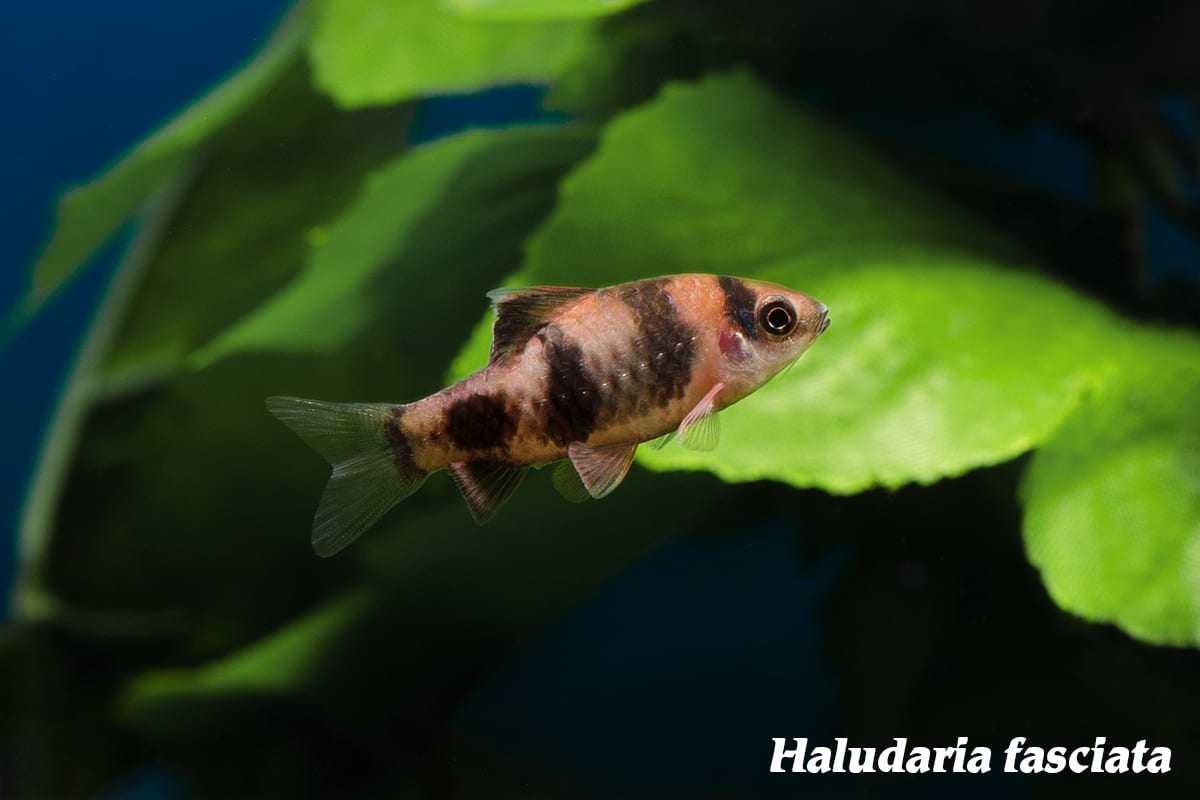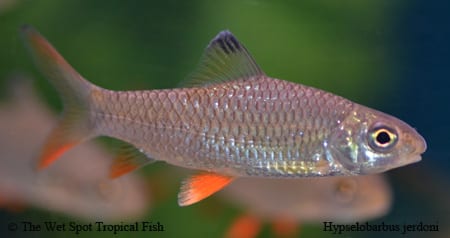Just a Little Bit of History Repeating
Just a Little Bit of History Repeating
Share on facebook
Share on twitter
Share on reddit
Share on pinterest
History repeats itself, and yes, that means evolutionary history as well. Species with distinct and separate ancestry are often found with similar characteristics. This circumstance has led to the incorrect classification of animal families and genuses continuously since the Linnean taxonomy system was adapted by biologists worldwide in the 1750’s. Only in recent years has molecular evidence uncovered these missteps, and species are being reunited with their rightful lineages at last. A prime example of this situation, is with the grouping of Barb fish. Classified together due to their similar mouth barbel morphology, scientific efforts published in 2012 uncovered the polyphyletic nature of the barb genus “Puntius”. The 30 species from this group are now classified under 5 distinct genuses, all with different common ancestors. Today, we will focus on some of these recently reclassified South Asian barb specimens, including Pethia gelius, Haludaria fasciata, and Hypselobarbus jerdoni.
Scientific NamePethia gelius
Common NameGold Clown Barb
Temperature / pH64 to 75°F / 6.0 to 7.0 pH
Native LocationBengal, Nepal, India
Preferred DietSmall invertebrates
Once known as Puntius gelius, our first specimen is our golden star of the newly identified Pethia genus. More commonly referred to as the “Gold Clown Barb”, these fish are found classing up freshwater ponds and ditches from Ganges and Brahmaputra river drainages in Bengal, Nepal, and Northern India. Small, golden, and arrow shaped, these barbs stand out in their preferred habitats of turbid waters with muddy and silty substrate, and plentiful vegetation. Gold Clown Barbs reach about 1.5 inches in length and exhibit beautiful dark markings, and the characteristic mouth barbels for which they were grouped. They use these barbels to seek out microinvertebrate meals in the substrate, and should be fed daily meals of live and frozen fare, though they will accept dried food supplementation. In captivity, they should be kept in densely planted tanks with additional floating plants, driftwood, and low light. Filtration is not a main concern for these fish, though they are sensitive to fluctuations in water chemistry. Waters should be maintained with temperatures between 64 and 75°F, pH of 6.0 to 7.0, and hardness of 18 to 179 ppm. This is a schooling species of barb, and should be kept in groups of 8 to 10 individuals. In larger groups, they exhibit stronger personalities, though they are generally peaceful and timid. Thus, they should not be kept in community tanks with larger more aggressive fish, though they do well with other small schooling fish like danios, and small cyprinids.
Scientific NameHaludaria fasciata
Common NameMelon Barb
Temperature / pH71 to 79°F / 6.0 to 7.5 pH
Native LocationIndia
Preferred DietOmnivorous
Another barb reclassified from the Puntius genus, is H. fasciata. Endemic to regions of south India, this barb resembles a creature found in terrestrial habitats in the nearby Himalayas. Nicknamed the “Melon Barb”, these fish have red copper bodies, and black banding. These barbs prefer to inhabit river drainages in the foothills of the Ghats mountains with shallow waters, and lots of vegetation and leaf litter. These barbs are often found in large groups of similarly-sized gregarious fish species in addition to conspecifics, and are great community tank species with other cyprinids, rainbowfish, killifish, tetras, and bottom dwellers like catfish and loaches. Panda Barbs reach about 2.5 inches in length, have exuberant personalities, and voracious appetites. Thus, they may outcompete some more timid schooling species, which should be kept in mind when planning community tanks including these specimens. Their diets consist of both meaty and vegetal foods, and they should be fed a variety of items including live and frozen fare like bloodworms or daphnia, in addition to algae, organic detritus, and high quality flakes and granules. Tanks should be equipped with dark substrate, plentiful vegetation, driftwood, and dark corners for hiding places. Optimal water conditions include temperatures of 71 to 79°F, pH of 6.0 to 7.5, and hardness between 36 and 179 ppm.
Scientific NameHypselobarbus jerdoni
Common NameLemon Fin Barb
Temperature / pH68 to 79°F / 6.5 to 7.5 pH
Native LocationIndia
Preferred DietOmnivorous
Another south Indian native, H. jerdoni, or the “Lemon Fin Barb” enjoys fast flowing and well oxygenated riverines. In these wild habitats, the lemon fin barb can reach 18 inches in length, though they will remain much smaller in captivity. They exhibit beautiful clear-silver scaled bodies with lovely lemon yellow shimmers behind their heads, and on their fins. This fish species does not require much for decor in their tanks, though they do well with rocky substrate made up of pebbles of varying sizes, and require pristine water quality. As inhabitants of very clear and fast flowing rivers, they are intolerant to organic waste build up, and require heavy filtration, frequent water changes, and some current. This barb tends to be a bit jumpy, so tight fitting lids are a necessity. They can be kept in community tanks consisting of other Indian Cyprinids with similar habitats, and in groups of conspecifics of 6 or more. Smaller or slow moving fish are vulnerable to become Lemon Fin Barb meals. These barbs are opportunistic omnivores who will hunt and eat small vertebrates and invertebrates alike, in addition to organic debris and vegetation. In captivity they should be fed a varied diet of bloodworm, daphnia, artemia, shelled peas, blanched spinach, fruits, and high quality flake and granules. Waters should be maintained with temperature of 68 to 79°F, pH of 6.5 to 7.5, and hardness between 34 and 137 ppm.
For a characteristic like mouth barbels on fish to have arisen separately several times implies a great benefit to fitness. Witness the unique use and benefits provided by these structures first hand with your pick of barb fish. We’re always here to help you navigate the barbed waters we know so well.


